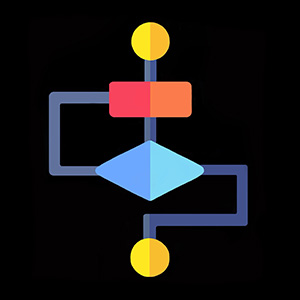How to Prepare for Algorithm Interviews (Part 1, Core Skills & Practice)
How to Prepare for Algorithm Interviews (Part 1, Core Skills & Practice) #
Interviews are challenging, and the outcome depends on both the interviewer and the candidate.
As candidates, we usually can’t influence the interviewer — but we can learn a few key principles that make the process smoother, more productive, and a bit less stressful.
The interview process always involves a lot of randomness — no algorithm can guarantee a 100% success rate.
But there are a few requirements and practical tips that can help you increase your chances.
🧱 Base Requirements (aka How to Prepare) #
The algorithm section of a technical interview is designed to assess your computer science fundamentals and the way you think. The interviewer tries to abstract away from your background, preferred programming language, or work experience. Instead, they typically present you with a few common problems—ranging from easy to hard — that are meant to reveal how well you understand the problem, identify constraints, choose appropriate data structures and algorithms, estimate complexity, and look for ways to optimize your solution.
You’ll be working within time limits, so no one expects you to make a groundbreaking discovery or solve a unique, never-before-seen problem.
To be honest, most interviewers work from a list of well-known tasks (you can find many of them online—here, we’ll focus on LeetCode) along with a set of standard solutions.
Your main goal is to recognize the underlying pattern (most problems follow a small number of common patterns) and apply it correctly to the given situation.
ℹ️ Example: Google tends to favor problems involving trees and graphs — it's worth focusing on those.
💻 Basic Knowledge of a Programming Language #
This part of the interview isn’t meant to test deep expertise in your main programming language. However, you should be able to write code — sometimes even pseudocode — without relying on support tools like an IDE. Most interviews use a basic online code editor, and if it has syntax highlighting, that’s already a bonus. The most awkward setup is when you're asked to write code on a whiteboard or piece of paper (yes, some big companies still do this — but in my opinion, it adds unnecessary stress and brings no value).
In many cases, your interviewer might not even know the language you're using. For example, I’ve led this section for frontend and mobile engineers, even though I have zero experience in those stacks.
In this part of the interview, it's best to avoid language-specific tricks and stick to basic, readable syntax. It’s also common for interviewers to ask you to re-implement built-in functions (like sorting) or to avoid using them altogether, just to see how you’d approach the logic behind them.
📝 That said, a quick note: in smaller companies, this rule may not apply. Sometimes they combine this part with a language-specific check or tech stack assessment—so be ready for that possibility too.
🎓 A Bit of Theoretical Knowledge #
You definitely can’t avoid having some basic understanding of data structures (like strings, arrays, hash maps, trees, heaps, etc.), algorithmic patterns (such as divide-and-conquer, dynamic programming, recursion, BFS/DFS, etc), and theoretical principles (like asymptotic complexity and “Big O” notation).
The depth of required knowledge depends on the company and position: FAANG-level companies (or some specialized positions) may expect a deeper understanding, while many mid-level companies are usually fine with the basics.
But don’t worry—this doesn’t mean you need to get Master’s of CS or read The Art of Computer Programming by Donald Knuth from cover to cover. Remember: algorithms and data structures are both a science and an art—but our goal is to pass a developer interview, not to write a PhD thesis on distributed systems or AI theory. (And honestly, if that’s your goal, you probably already know more about those topics than the authors of this blog 😄).
📚 Get Lots of Practice #
For our goal, practical experience is far more valuable than pure theory (especailly for mid-level companies). As I mentioned earlier, you’ll usually face a set of well-known problems in interviews, and your main task is to recognize the underlying pattern and apply the right solution for it.
There’s a popular belief that solving around 500 problems — covering a variety of patterns — can get you 90% ready for any algorithmic interview. In my opinion, you’ll need far fewer problems to feel confident at mid-level companies, which usually don’t focus as heavily on this part.
In fact, there are about 15–20 topics and up to 50 common problem-solving patterns that regularly appear in interviews. So it’s definitely possible to review them all. But here’s the catch: you often need to solve a set of problems before you clearly recognize a pattern. For example, I had to work through 5–10 dynamic programming problems in a row before I consistently started spotting the pattern.
Unfortunately, if you stop practicing for too long, you’ll likely forget many of these skills. So consistency matters.
👣 Follow Our Blog #
Okay, it might sound like a joke — but there’s actually some truth to it. Your own experience is the best way to prepare, no doubt.
But reading how others solve problems, explore their logic, or even just arguing or thinking out loud can be helpful too.
And who knows — when you’re faced with a tricky problem in a real interview, something from this blog might pop into your head. Maybe not the full solution, but a helpful tip, a pattern, or just a way to stay focused and calm in a stressful moment.
📬 Like this post? Follow @thealgoapp for more!

